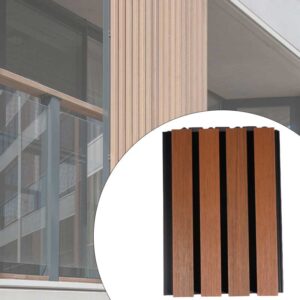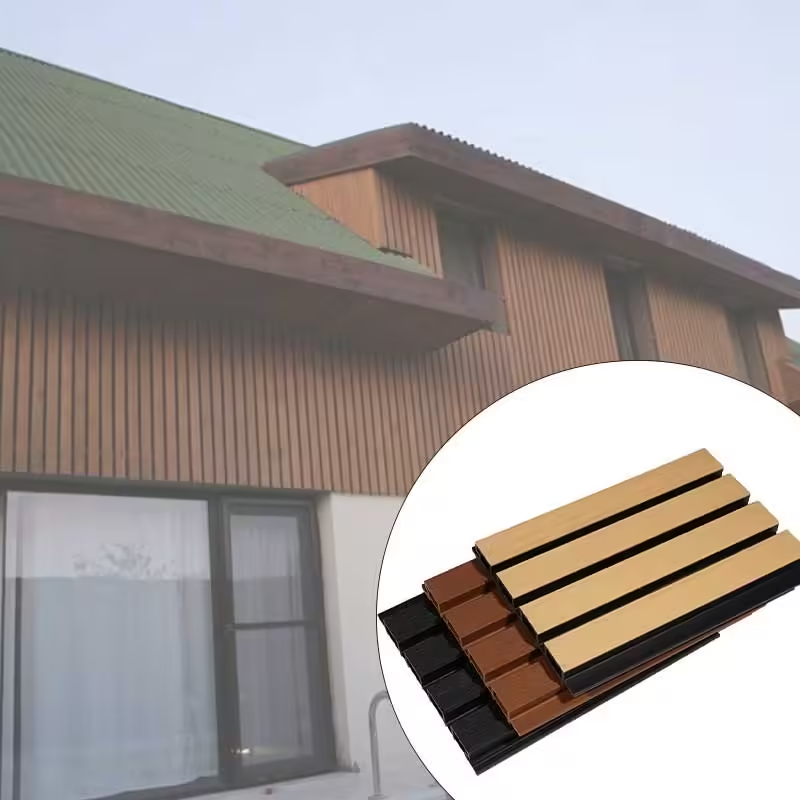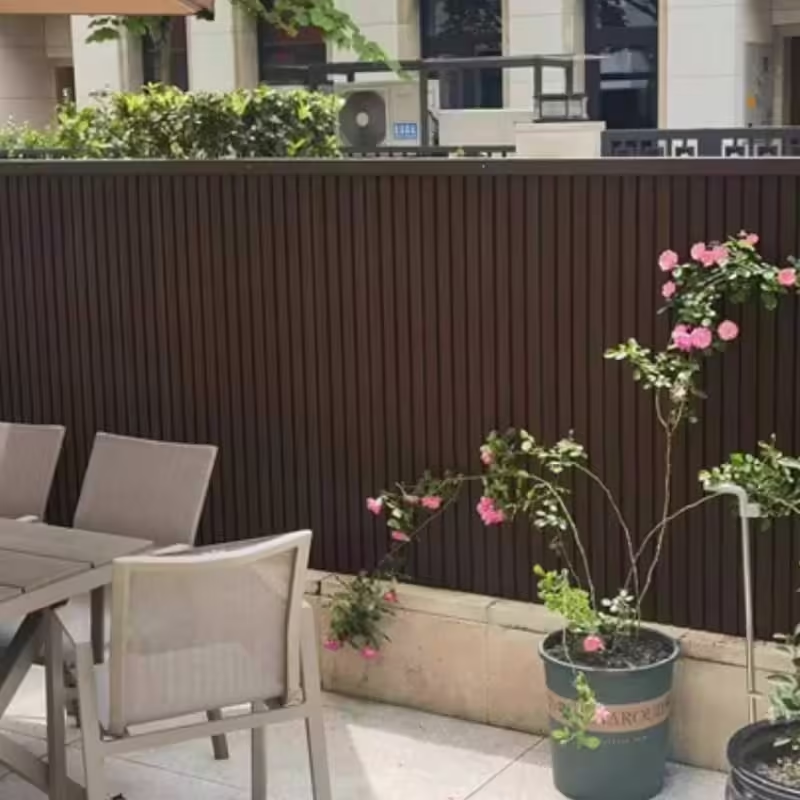Welcome to My Blog! 🌟
Before we dive into the content, let’s stay connected! Join me on my social media platforms where I share exclusive insights, engage with our amazing community, and post regular updates. Here’s how you can connect with me:
📘 Facebook: Follow Me on Facebook
Now, let’s embark on this journey together. I hope you find the content here insightful, engaging, and most importantly, valuable. Let’s explore, learn, and grow together! 🚀
Feel free to share your thoughts and feedback in the comments or on my social media—I’d love to hear from you! 😊
Table of Contents
Introduction

Choosing a wpc wall panel outdoor for your space might seem straightforward, but even a small mistake can lead to significant long-term issues. These panels are designed to offer durability, aesthetics, and environmental benefits, but they must be selected with care. Whether you’re a contractor, architect, or homeowner planning an exterior makeover, the decisions you make when purchasing your wpc wall panel outdoor products can impact not just the visual outcome but also the panel’s lifespan, maintenance, and performance.
Many buyers fall into the trap of focusing solely on price or appearance without considering critical elements such as panel composition, UV resistance, installation compatibility, and vendor reliability. This guide highlights the five worst errors people make when purchasing wpc wall panel outdoor solutions and provides insights to help you avoid them. By understanding these pitfalls, you can make a more informed purchase that leads to long-term satisfaction.
Let’s dive into these common mistakes and learn how to make smarter decisions for your next outdoor wall panel investment.
Error 1: Ignoring Material Composition and Core Quality
One of the biggest mistakes when selecting a wpc wall panel outdoor is overlooking the importance of the core material and manufacturing quality. WPC (Wood Plastic Composite) panels are made by blending wood fibers and thermoplastics, but not all blends are equal. Some manufacturers use recycled plastics or low-grade wood fibers, which compromise strength, color retention, and weather resistance.
High-quality wpc wall panel outdoor materials use a balanced ratio of HDPE and treated wood flour, often with added UV stabilizers. Panels with inconsistent core materials are more likely to crack, warp, or fade under extreme temperatures or heavy moisture.
Ask the supplier for details on the material composition, density rating, and certifications. Reputable manufacturers will offer documentation or test reports to confirm the quality of their product. This ensures the product is not only aesthetically pleasing but also functional over time in various climates.
Key Takeaway:
Always verify the core composition and manufacturing process when evaluating any wpc wall panel outdoor. A lower upfront cost might mean higher replacement costs in the near future.
Error 2: Choosing a wpc wall panel outdoor Without UV Protection
UV degradation is a serious issue for outdoor wall panels. Over time, sun exposure can cause discoloration, brittleness, and a chalky residue on the surface of your wpc wall panel outdoor. Many buyers overlook this feature, focusing instead on texture and color selection.
However, without UV-resistant additives or surface treatments, your panels may start fading within months of installation. This not only affects the aesthetics of your building facade but may also reduce resale value or tenant satisfaction in commercial properties.
Some manufacturers apply a co-extruded cap layer that includes UV inhibitors, anti-oxidants, and stain-resistant compounds. This additional layer shields the core from damage and helps the surface maintain its appearance for a longer time.
Before you buy, ask about the UV protection system used in the panel and request data on long-term weathering tests.
Tip:
Don’t just rely on supplier claims. Look for third-party test reports that show how the wpc wall panel outdoor performed in accelerated weathering simulations.
Error 3: Not Considering Installation Compatibility

Another major mistake is buying a wpc wall panel outdoor without verifying its compatibility with the existing installation environment. Each panel system has its own fastening method—some require special clips, while others use direct screw systems. If the mounting surface or supporting structure is not aligned with the panel design, it could lead to warping, improper sealing, or loose panels.
Additionally, the expansion and contraction characteristics of WPC material must be accounted for. Panels that are installed without proper spacing or without flexible anchors may buckle or crack over time due to thermal movement.
Many buyers only consider the aesthetics and overlook these technical aspects, resulting in costly reinstallation or repairs. It’s essential to consult with your installer or review the installation guidelines provided by the manufacturer before finalizing your purchase.
Below is a comparison of common installation systems used in wpc wall panel outdoor products and their features:
Common Installation Systems for wpc wall panel outdoor
| Installation Type | Fastening Method | Suitable For | Thermal Movement Handling | Special Tools Needed |
|---|---|---|---|---|
| Hidden Clip System | Metal/Plastic Clips | Residential or Facades | Good (allows flexibility) | Yes |
| Screw-through Face Mount | Direct Screwing | Low-budget applications | Poor (less room for shift) | No |
| Rainscreen Mount System | Horizontal Furring Strips | High-rise, ventilated wall | Excellent | Yes |
| Interlocking Groove Type | Snap-fit Mechanism | DIY, Simple exteriors | Moderate | Minimal |
Advice:
Match the panel system with your building’s structure and climate needs. Always follow manufacturer-recommended installation procedures to ensure long-term performance.
Error 4: Overlooking Supplier Reputation and Support
While pricing is always a consideration, choosing a wpc wall panel outdoor supplier based solely on the lowest quote can be a grave error. Not all suppliers are equal when it comes to material sourcing, manufacturing consistency, packaging, and customer support.
A low-cost provider may save you money upfront, but it can lead to delays, miscommunications, or even defective product batches. Worse, some vendors disappear after the sale, leaving you without support in case of installation issues or warranty claims.
Good suppliers offer more than just a product—they provide after-sales support, technical documents, maintenance guidelines, and timely logistics. It’s wise to investigate a supplier’s background, read reviews, and ask for case studies of previous projects.
Check for international certifications, return policies, and whether they provide installation training or material samples. These elements indicate a supplier who stands behind their product and values customer satisfaction.
Red Flag Warning:
If a supplier can’t provide references, samples, or documentation, consider it a warning sign and explore other options.
Error 5: Ignoring Long-Term Maintenance Requirements

A wpc wall panel outdoor may be labeled as “low maintenance,” but that doesn’t mean “no maintenance.” Failing to consider cleaning routines, refinishing needs, or compatibility with cleaning agents can shorten the lifespan of your panels and lead to a dull or stained appearance over time.
Dust, mold, bird droppings, and pollutants can accumulate on the surface. Without proper maintenance, the panel may lose its color vibrancy or develop stains that are hard to remove. Moreover, improper cleaning—like using bleach or pressure washers—can degrade the surface coating or damage seams.
Understanding maintenance recommendations before purchase helps you prepare for the cost and effort required. Some panels only need a yearly wash with mild detergent, while others require additional treatments or protective coatings.
Request a maintenance manual or cleaning guide from the manufacturer so your maintenance team is properly equipped.
Practical Tip:
Choose a panel that balances visual appeal with realistic upkeep requirements. Over time, this will result in lower costs and a better-looking building exterior.
Conclusion
Selecting a wpc wall panel outdoor should not be a rushed decision. By taking the time to understand the five major buying errors—material composition, UV protection, installation compatibility, supplier support, and maintenance—you can make a choice that saves time, money, and stress in the long run.
These panels are a long-term investment in your building’s exterior, and getting it right the first time will bring lasting satisfaction. Whether you’re updating a single wall or cladding an entire commercial building, the right selection can enhance your property’s value, appearance, and environmental impact.
When in doubt, consult industry professionals, request samples, and ask detailed questions before placing your order. A well-informed purchase is the key to avoiding disappointment and maximizing the benefits of your wpc wall panel outdoor system.
If you’re ready to make a smart decision, start by evaluating panel samples, checking certifications, and asking for technical documentation. Want expert help? Contact our team to get advice tailored to your project needs.
FAQ
What does wpc wall panel outdoor mean?
It refers to wood-plastic composite wall panels specifically designed for outdoor applications such as facades, garden walls, fences, and balconies. These panels combine the look of natural wood with the durability of plastic polymers.
Are all wpc wall panel outdoor products the same?
No. They vary significantly in core material quality, surface treatment, UV protection, and installation systems. Always compare specifications before purchasing.
Can I install a wpc wall panel outdoor by myself?
Some systems are designed for DIY installation, especially those with interlocking or groove-type mechanisms. However, professional installation is recommended for larger or more complex projects to ensure proper spacing and long-term durability.
How long does a wpc wall panel outdoor last?
With proper installation and maintenance, high-quality wpc wall panel outdoor products can last 15–25 years depending on exposure, climate, and product grade.
What kind of maintenance do these panels require?
They typically need occasional washing with mild soap and water. Avoid using harsh chemicals or pressure washers. Some panels may benefit from UV protectant sprays depending on the manufacturer’s recommendations.
